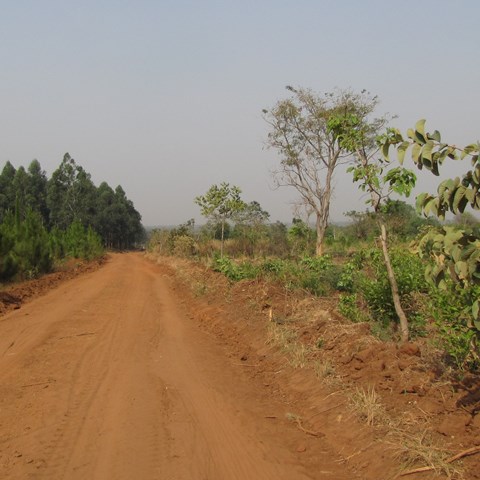This is very problematic since if project proponents have not understood the actual problems and underlying causes behind current patterns of deforestation in that particular place, they will suggest the wrong solution. If, for example, project planners think that local communities’ way of using land in general destroys forests, and don’t ask and observe how forests are actually managed locally, they will miss any existing local by-laws or other routines to protect or sustainably manage the forests.
Connected to this is a problem of defining what degradation is –what is the ‘natural’ state of an area in terms of how forested it is – and how do we know that? Should every area that is not in its natural state be seen as degraded? Savannahs were for decades thought by ecologists to be degraded forests, until it was understood that they are natural grasslands with pockets of trees. Projects for “restoring degraded savannahs” have therefore done more harm to the ecosystem than good. Even satellite image analysis has been shown to be biased by pre-conceived ideas about how landscapes should look when assessing degradation.
Click on the arrow below each question to read about more concrete examples of problems that can happen.
 Questions to ask
Questions to ask
If you claim that the local communities’ activities are the reason behind ongoing degradation/deforestation, do you provide evidence that integrates local people´s knowledge and opinions presented by you to support this suggestion?
Examples
For example, have historical events such as previous wars or migrations been investigated that are important to understand any degradation? Does the investigation include the voices and perspectives of local communities about if and why the area has been deforested/degraded? If any particular group is pointed out as the one causing degradation, has there been a thorough discussion with members of that group to understand their perspectives?
Have you developed a plan on how to replace any potential activities that have caused any over-exploitation of resources, beyond restricting that activity? If not, this will likely lead to local level problems and suffering.
Examples
For example if people collect fire wood to sell or collect soil to make pots for an income, and these activities are prohibited by the project, these people need to have locally acceptable and alternative ways of getting that income.
Have you developed a strategy on how to deal with any potential structural problem that might “force” ongoing local over-use of forest/trees, and if/how the project can address this in order to be sustainable over longer term?
Examples
If there is pressure from mining, tourism, large-scale agriculture or other sectors in the area which occupies large land areas, this might force local populations to search for new agricultural land for instance in forests. How can the project address these issues in a way that makes project goals viable at the same time as local communities’ livelihoods are secured?
Are investigations into degradation made by you as project proponents yourselves, and if so, do you clearly describe and respect local perspectives even if they might complicate project design?
Examples
For example, interviews and surveys could have included leading questions, voices of the local people could be cherry-picket to reflect those whose opinions align with the project idea, satellite imagery can be too coarse to be easily interpretable (and thus vulnerable to misinterpretation based on preconceived ideas).
Are alternative causes to degradation (other than suggested local overuse) discussed? Often, important causes behind the problem can be found in external pressures and may not be solved by locally focused projects.
Examples
For example external factors driving degradation can be climate change, external pressure on land from mining or conservation that forces farmers to cut forests to prepare agricultural land, large-scale logging, historical clear-cutting and urban demand for charcoal.
What kind of trees will be planted and how? Are choices of trees adapted to local contexts? The more farmers are included in decision-making and the project adapted to their specific needs, the more complex and expensive the project risks becoming.
Examples
Tree planting can be done in very different ways – a common way is large-scale monoculture plantation of exotic species, as this is cheap and efficient for carbon sequestration. However, planting only one tree species have been shown to be a threat to both local people and their environments, reducing biodiversity and availability of locally used trees. Local wildlife or insects may not be used to exotic trees and loss of pollinators may affect agriculture. People often need to leave their land to make space for large plantations, or are restricted from accessing the area afterwards, and monocultures require more agricultural inputs such as pesticides and fertilizers. Tree restoration initiatives, or agroforestry-based tree planting where a few trees are planted and often mixed with agricultural practices, can have very different impacts locally – farmers may have more decision-making power over what trees are planted and where. The risk of rural people losing land is usually smaller. However, these projects can still have problematic aspects and impacts in other aspects discussed in this guide.
In the case of monoculture plantations, do you describe them as good since they increase tree cover? If so, do you include the loss of biodiversity, particularly when foreign trees are planted?
Examples
If species-rich savannah or bush land, or land used by migrating animals or for agroforestry practices is being replaced by denser monoculture plantations, this could result in a severe loss of biodiversity and reduced access to natural products such as grass, fire wood or roots for local communities.
 Warning signs
Warning signs
Are you using degradation and deforestation data at the national or regional level to argue for degradation in a specific area? If so, this is problematic since every location has its own specific historical, environmental, social and political context. You need to get an understanding of degradation and deforestation dynamics and data from the specific location.
